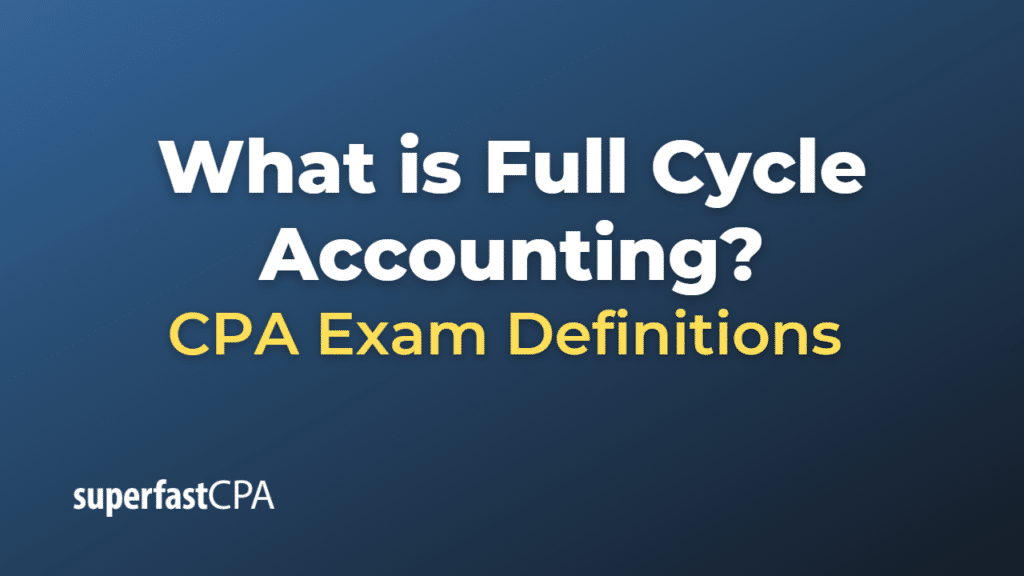Full Cycle Accounting
Full cycle accounting refers to the complete set of activities undertaken by an accountant to record all business transactions during an accounting period and includes everything from the initial recording of a business transaction (the start of the cycle) to the preparation of the financial statements (the end of the cycle).
These activities typically include:
- Recording Transactions: This involves journalizing all business transactions using debits and credits in accordance with the double-entry bookkeeping system.
- Posting to Ledger Accounts: Journal entries are then posted to the general ledger accounts, which provides a detailed record of all changes in each account throughout an accounting period.
- Preparing a trial balance: After all transactions have been posted, a trial balance is prepared to ensure that total debits equal total credits.
- Making Adjusting Entries: At the end of the accounting period, adjusting entries are made for items like depreciation, accrued expenses, and prepaid expenses.
- Preparing an Adjusted Trial Balance: After making adjusting entries, another trial balance is prepared to ensure the books are still in balance.
- Preparing Financial Statements: The income statement, statement of retained earnings, balance sheet, and cash flow statement are prepared using the adjusted trial balance.
- Closing the Books: Temporary accounts (like revenues, expenses, and dividends) are closed to the retained earnings account, and a post-closing trial balance is prepared.
- Starting the Cycle Again: The process begins again for the next accounting period.
By managing the full cycle of accounting, accountants ensure accurate and timely financial reporting, which is crucial for managing a company’s financial health, making informed business decisions, and fulfilling legal obligations.
Example of Full Cycle Accounting
Let’s look at an example of full cycle accounting for a small business, such as a local bookstore.
- Recording Transactions: The bookstore makes a sale, selling a book for $20. The accountant records the transaction, debiting Accounts Receivable or Cash for $20 and crediting Sales Revenue for $20.
- Posting to Ledger Accounts: The accountant posts this transaction to the general ledger, increasing the balances of Accounts Receivable or Cash and Sales Revenue.
- Preparing a trial balance: At the end of the month, the accountant prepares a trial balance to ensure total debits equal total credits across all accounts.
- Making Adjusting Entries: The accountant realizes that a portion of the rent expense for the current month has been prepaid and needs to be adjusted. They make an adjusting entry to debit Prepaid Rent and credit Rent Expense.
- Preparing an adjusted trial balance: After making the adjusting entry, the accountant prepares an adjusted trial balance.
- Preparing Financial Statements: The accountant uses the adjusted trial balance to prepare the bookstore’s financial statements, including the income statement, the statement of retained earnings, the balance sheet, and the cash flow statement.
- Closing the Books: After the financial statements have been prepared and reviewed, the accountant closes the temporary accounts, transferring their balances to the retained earnings account.
- Starting the Cycle Again: The cycle starts again for the next accounting period. The accountant begins recording and posting the new month’s transactions, and the process repeats.
This cycle ensures that all financial transactions are accurately recorded and reported, which is critical for the business owner’s decision-making and for tax purposes.













